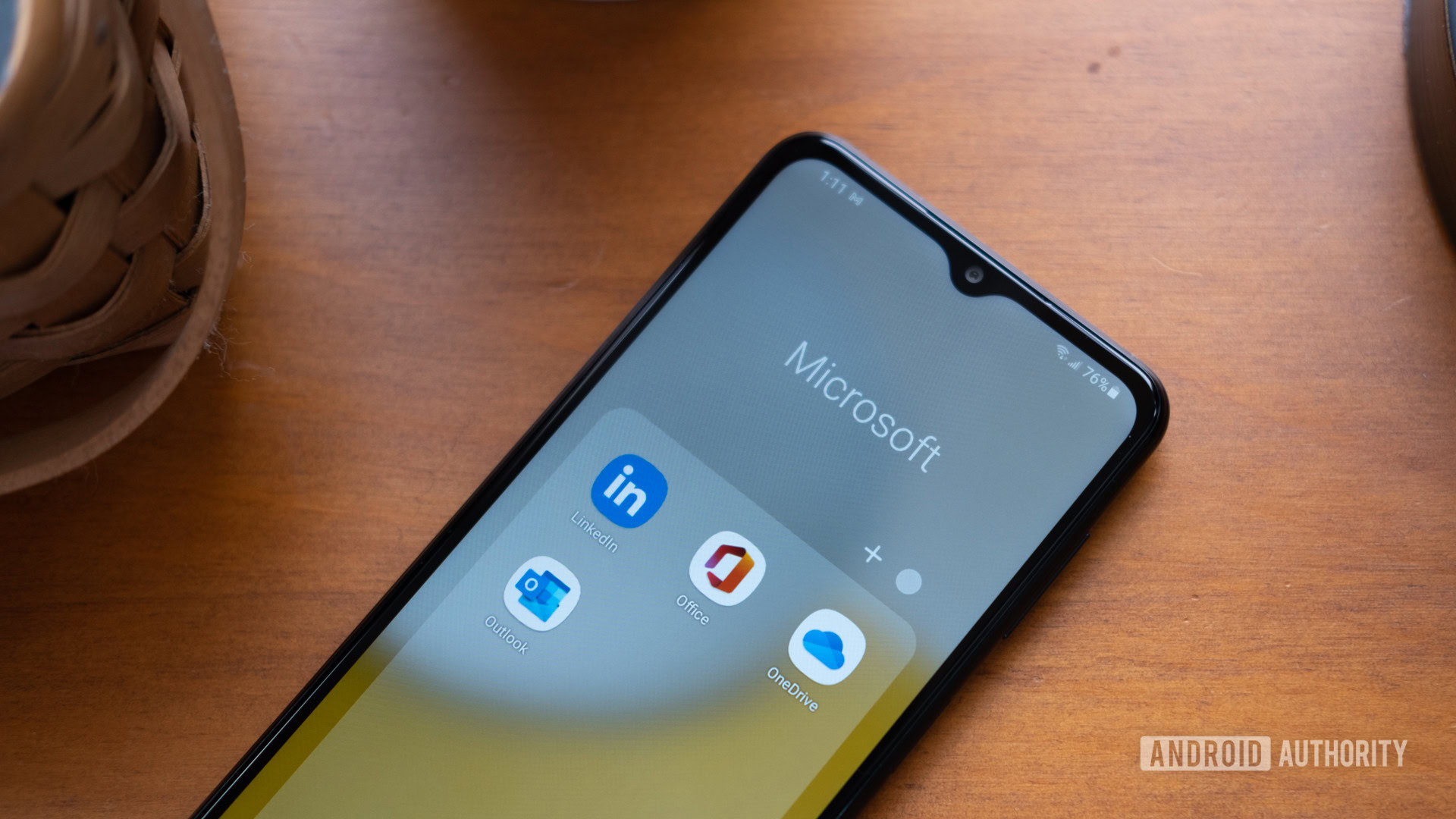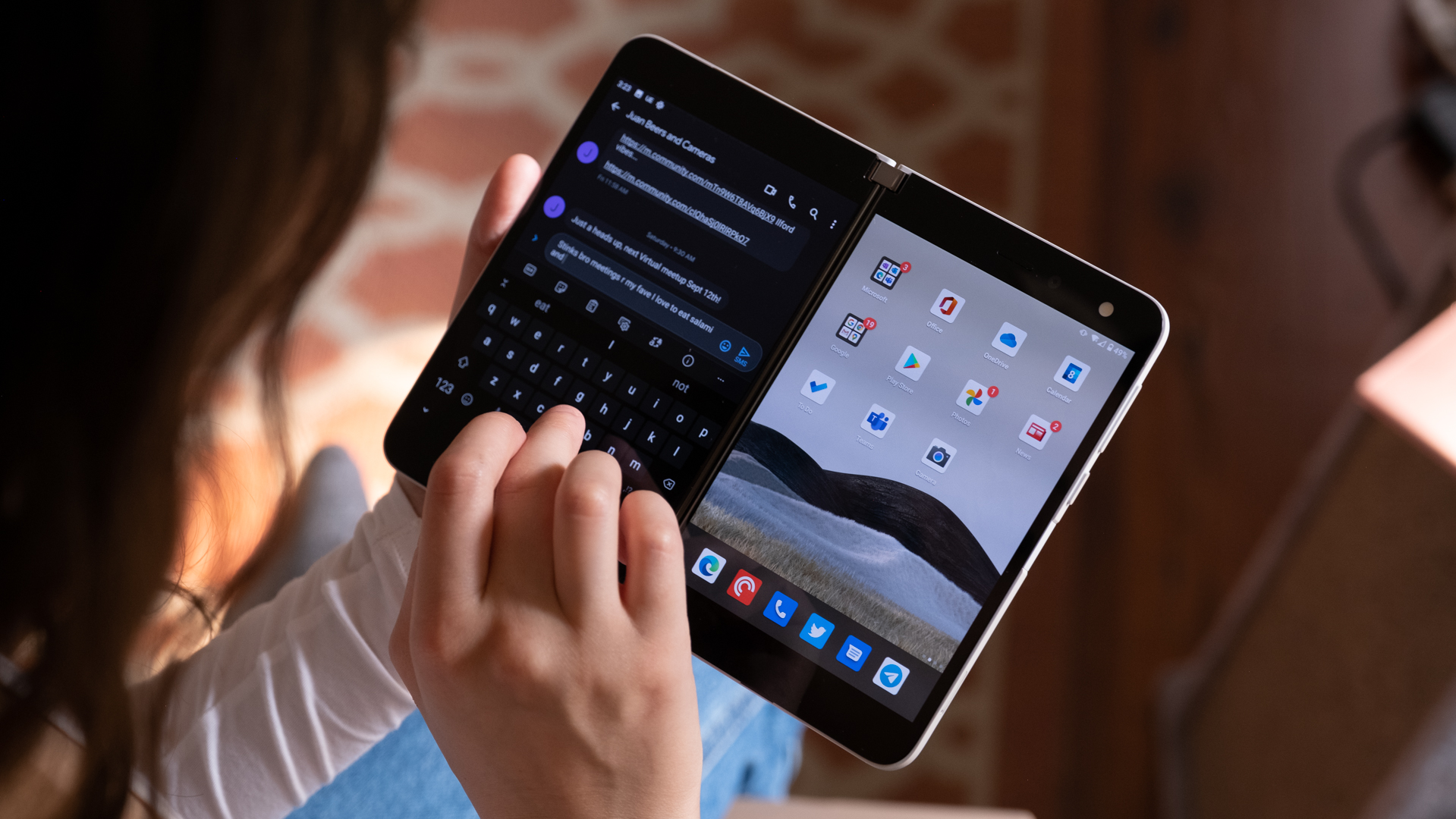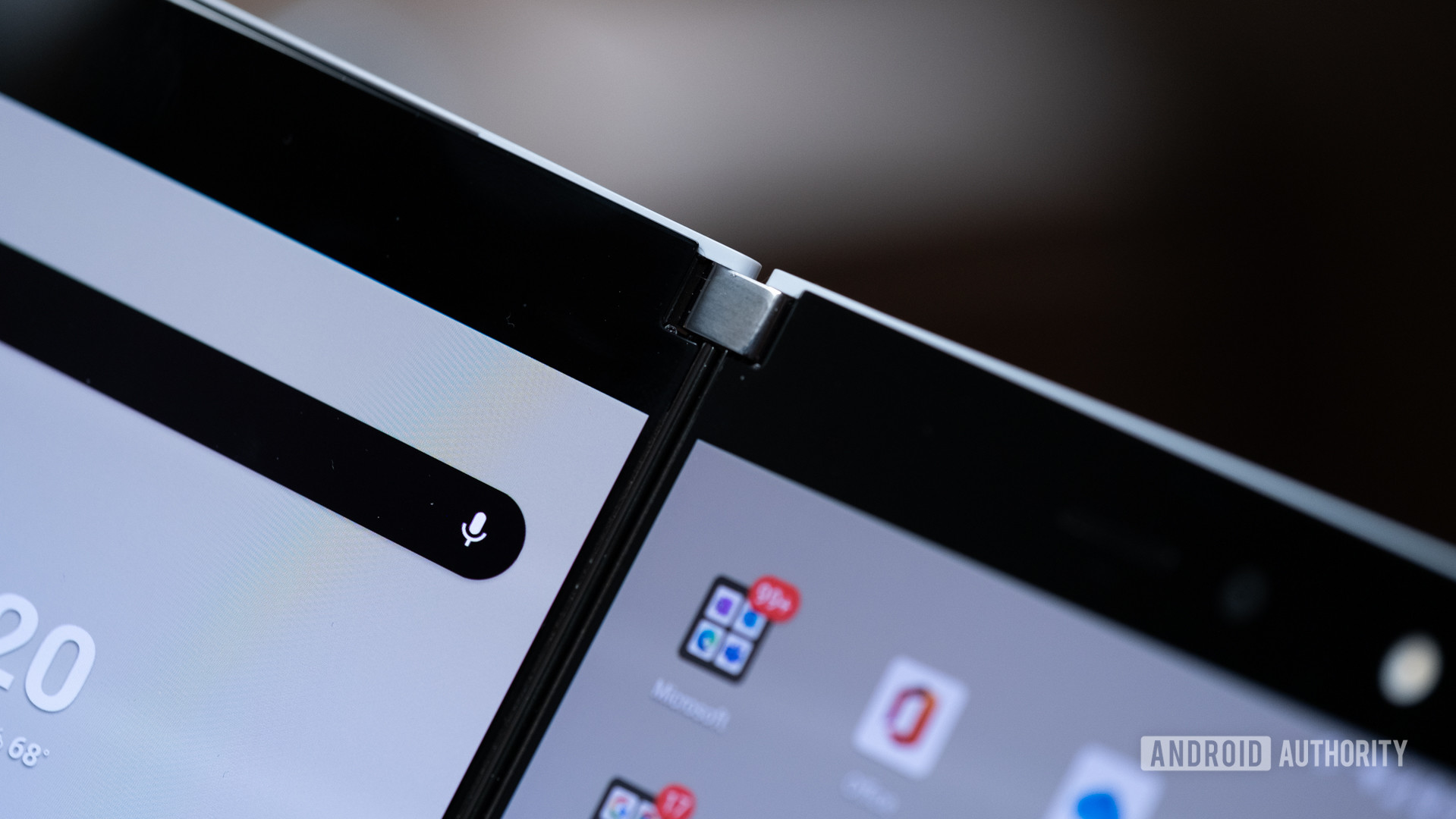A Microsoft foldable doesn’t make sense anymore, or does it?
David Imel / Android Authority
Microsoft hasn’t released a new Android device since 2021’s Surface Duo 2, but a new report may have shed some light on the company’s future plans.
Windows Central reported that Microsoft ditched the dual-screen design of previous Surface Duo devices in favor of developing a Surface Duo 3 with a folding display (akin to the Galaxy Z Fold line). Furthermore, the outlet’s sources assert that the company plans to release a more conventional slab-type smartphone akin to other handsets.
Unfortunately, I don’t think a new Microsoft foldable or conventional smartphone makes much sense in 2023.
Do you want to see new Android-powered Surface devices?
1 votes
Samsung already offers unofficial Microsoft phones

Ryan Haines / Android Authority
Perhaps the biggest reason for consumers to skip new Android-powered Microsoft smartphones is Samsung. The company’s phones, including the Galaxy S series and Galaxy foldables, are effectively Microsoft phones in all but name.
Samsung’s phones offer a variety of pre-installed Microsoft apps for starters, including Outlook, LinkedIn, Office, and OneDrive. The two companies even worked together to offer foldable-focused enhancements in apps like Teams and Outlook. The Microsoft extras don’t end here for Samsung owners.
Samsung phones already offer pre-installed Microsoft apps and exclusive features for Windows connectivity.
Microsoft also offers a Link To Windows service on a variety of Android phones, allowing users to receive mobile notifications, send/receive texts, access phone photos, and more via their PC. But Samsung phones (along with the Surface Duo and Honor Magic 4 Pro) gain additional semi-exclusive features, such as cross-device drag-and-drop, cross-device copy/paste, using your phone apps on PC, and more.
In other words, Samsung phones are as close to a Microsoft experience as you can get in many ways. Even Microsoft co-founder Bill Gates opts for a Galaxy Z Fold 4. But there are also a few areas where Samsung phones and foldables will likely be better than any Microsoft Android device.
Microsoft’s hardware and software leave us wanting

David Imel / Android Authority
Samsung phones are almost guaranteed to offer a better camera experience than a new Microsoft slab or foldable phone. Microsoft’s days of having the best (or even great) smartphone cameras are long gone, and the Surface Duo and Surface Duo 2 indeed demonstrated that. Samsung, on the other hand, is still one of the top brands for photography.
Microsoft’s Surface Duo series also doesn’t inspire much confidence in terms of overall hardware. The first Duo in particular brought a previous-generation flagship chipset, 60Hz screens, a single rear camera, no NFC, no wireless charging, and no 5G for an eye-watering $1,400 in 2020. The Duo 2 addressed almost all of these issues, but for $100 more. Needless to say, while the Surface Duo 2 suggests Microsoft is learning from its hardware missteps, it’s far too early to tell whether a future Surface Duo 3 and Surface phone will be compelling hardware propositions.
More reading: The best foldable phones worth buying today
The company’s apparent switch to a foldable screen for the Surface Duo 3 also presents additional hardware challenges. Samsung has spent over four years refining its existing foldables, delivering ultra-thin glass, tougher folding screens, S Pen support, and water resistance. We’re sure Microsoft can adopt a couple of these developments, but the Redmond firm is still on the back foot in this regard.
There’s more to a mobile device than hardware, though. All the shiny parts mean nothing if the software isn’t good enough, and Microsoft found this out with both the first-gen Surface Duo and Surface Duo 2.
We thought the first-gen model had horribly buggy software in our Surface Duo review, ranging from UI issues and unlocking glitches to missing backgrounds and more. Things seemed a little better with the Surface Duo 2, but it still reportedly shipped with a ton of bugs. Microsoft released a steady stream of updates to fix these problems after launch, but you shouldn’t expect such a severe lack of polish when you’re paying well over $1,000.
Future Android-powered Microsoft devices will likely lag behind rivals when it comes to software polish and hardware.
The company’s track record in this area combined with a switch to a folding screen means unpolished software is almost inevitable with the Surface Duo 3, even with Android 13’s enhancements. But Samsung also edges out Microsoft’s previous Surface Duo devices when it comes to software updates, offering four OS updates and five years of security patches. By contrast, the Surface Duo 2 should deliver three OS updates and three years of security patches.
But here’s why it might be worth the gamble

David Imel / Android Authority
Despite all these arguments against a proper Surface foldable and Surface phone line, there are still a couple of reasons why we’d want to see these products. For one, we’d welcome these new devices if they represented part of a focused, long-term mobile strategy for Microsoft. After all, what’s the point of buying into a brand’s products if it decides to leave the segment in a few years? A long-term commitment would hopefully result in more solid products in a few generations — just look at Google’s Pixel line.
Microsoft is also uniquely positioned as a Windows platform-holder. It can bring deeper, native PC integration with any future Android-powered devices. So you might not have to opt for Apple’s ecosystem or get a Chromebook if you want a truly seamless cross-device experience.
We’d also look forward to these new products simply because Microsoft’s previous Surface Duo devices have delivered some interesting and innovative features. The first-generation Duo introduced app spanning across two screens and the ability to launch two apps at the same time. We also saw some other interesting features such as the notification peek functionality (giving you a glimpse of alerts when you partially open the device) and drag-and-drop between apps.
In other words, a Surface Duo 3 foldable or Surface phone would potentially make for a more exciting, innovative smartphone landscape. But even if these devices are commercially unsuccessful, they could ultimately seed the industry with fresh ideas and concepts.
For all the latest Technology News Click Here
For the latest news and updates, follow us on Google News.
